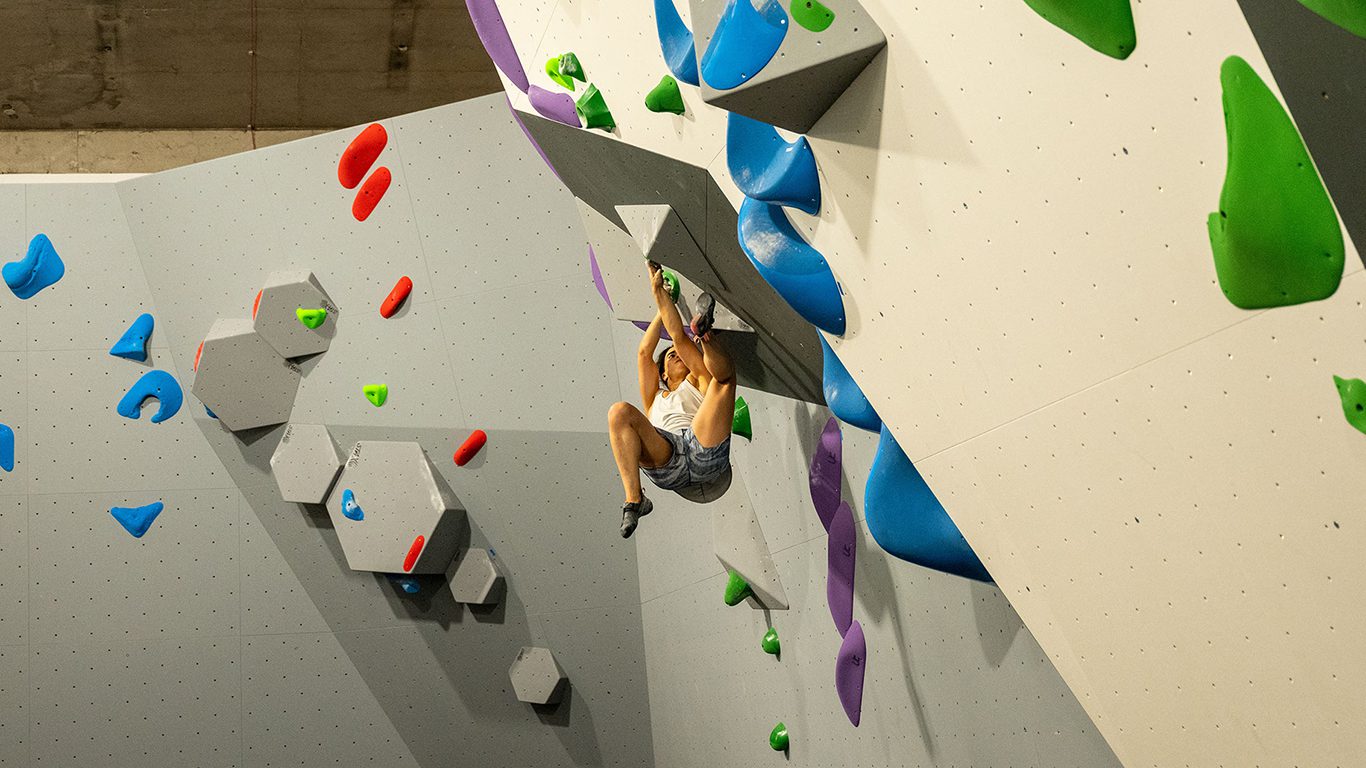
Bouldering can be a physically challenging sport that requires strength and balance and can lead to injury if not done correctly. These risks can cause fear in beginners trying the sport for the first time. Therefore, it's essential to understand why fear is a natural response when participating in activities such as bouldering.
Understanding fear is important because it can help you differentiate between legitimate fear caused by real dangers and irrational fear that can prevent you from reaching your potential.
It's important to recognise when your fear is legitimate, such as when you're trying a challenging route that could result in injury if you fall, and when it's irrational, such as when you're trying an easy route that you know you can do but still feel apprehensive.
Legitimate fears are based on genuine physical risks that come with bouldering, such as slipping and falling from a high height or attempting a difficult route beyond your ability level. These fears are based on reality and can have real consequences, such as injury, and should be taken seriously. They are not irrational or unfounded; instead, they stem from a valid source of concern.
On the other hand, irrational fears in bouldering are not based on physical reality and pose little or no real danger to the boulderer. For example, a boulderer might feel scared to try an easy route they have successfully completed, even though there is little to no risk of injury or failure. This fear is not based on real danger but on a lack of confidence or a fear of failure.
Before you can start to tackle your fears, you need to identify what they are. Take some time to think about what is causing you anxiety or worry and write them down.
Once you have identified your fears, it’s essential to recognize that fear can actually be a helpful tool in achieving your goals. Fear can motivate us to act and push ourselves outside our comfort zone.
Once you have identified and accepted your fears, it’s essential to sit with them and understand why they exist. Ask yourself questions such as “What am I afraid of?” and “What would happen if I did this?” This will help you understand why these fears exist and how they may prevent you from achieving your goals.
After understanding why specific fears exist, creating goals that are musts for yourself is essential. These should be goals that are non-negotiable and that you must accomplish to move forward in life. This will help keep you motivated and give you something concrete to work towards when overcoming fear.

When you're just starting with bouldering, you will find that some routes are easier than others. These easier routes can be good practice for you to get used to bouldering and build your confidence. Start by attempting routes well within your comfort zone and work up. As you progress and build your confidence, gradually increase the difficulty of the routes you attempt.
Taking small steps is also essential when working on a particular sequence of moves. Break it down into smaller parts and work on perfecting each one before attempting the whole sequence. This technique will help you build your confidence and prevent injury.
One of the main reasons people fear bouldering is the fear of falling. Falling from any height can result in serious injury, and this fear can hinder progress. Practising falling in a safe and controlled environment can help you overcome the fear of falling.
Ask a trained professional to show you how to fall safely without injuring yourself, and gradually work your way to higher heights. As you get more comfortable with falling, your fear will diminish, and you'll be able to enjoy bouldering more freely.
Visualisation can be useful for overcoming irrational fears by helping you visualise a successful outcome. Close your eyes and picture yourself completing the climb easily or engaging in a particular movement on the wall. Try to include as many details as possible to make the visualisation feel more real. This technique can help build your confidence and alleviate irrational fears.
The concept of progressive exposure is gradually introducing yourself to something you're afraid of in a safe and controlled environment. This approach helps people overcome irrational fears, general anxiety, or specific phobias.
In bouldering, progressive exposure means starting with easy climbs you're comfortable with and gradually exposing yourself to more challenging ones. For example, if you're afraid of heights and have never climbed, starting with a low-level climb before attempting a higher one is best. By doing so, you're slowly building confidence and skills while minimising the risk of injury or failure.
As you gain experience and confidence, you can gradually increase the difficulty of the climbs you attempt. By taking small steps, you retrain your brain to view the situation as less threatening, which can help to alleviate irrational fear. You'll then overcome your fear and develop the skills and confidence to tackle more challenging climbs in the future.
Negative self-talk can fuel irrational fears, and it's important to counteract those thoughts with positive affirmations. Whenever you feel yourself succumbing to anxiety or panic before climbing, try to replace negative thoughts with positive ones. Remind yourself of your abilities, and tell yourself you can achieve your goals.
If you're struggling with an irrational fear of bouldering, don't hesitate to seek support from other boulderers or one of the climb-fit instructors. A trusted friend or mentor can provide encouragement and even advice on techniques that worked for them to overcome similar fears.
If you're a beginner looking to start bouldering, joining a clinic at Climb Fit is an excellent way to get started. The experienced staff can provide personalised instruction and advice and help you understand the fundamentals of climbing techniques, safety protocols, and equipment selection. The clinics also offer progressive exposure exercises that will slowly increase your comfort level with challenging climbs -all in a safe and supportive environment.